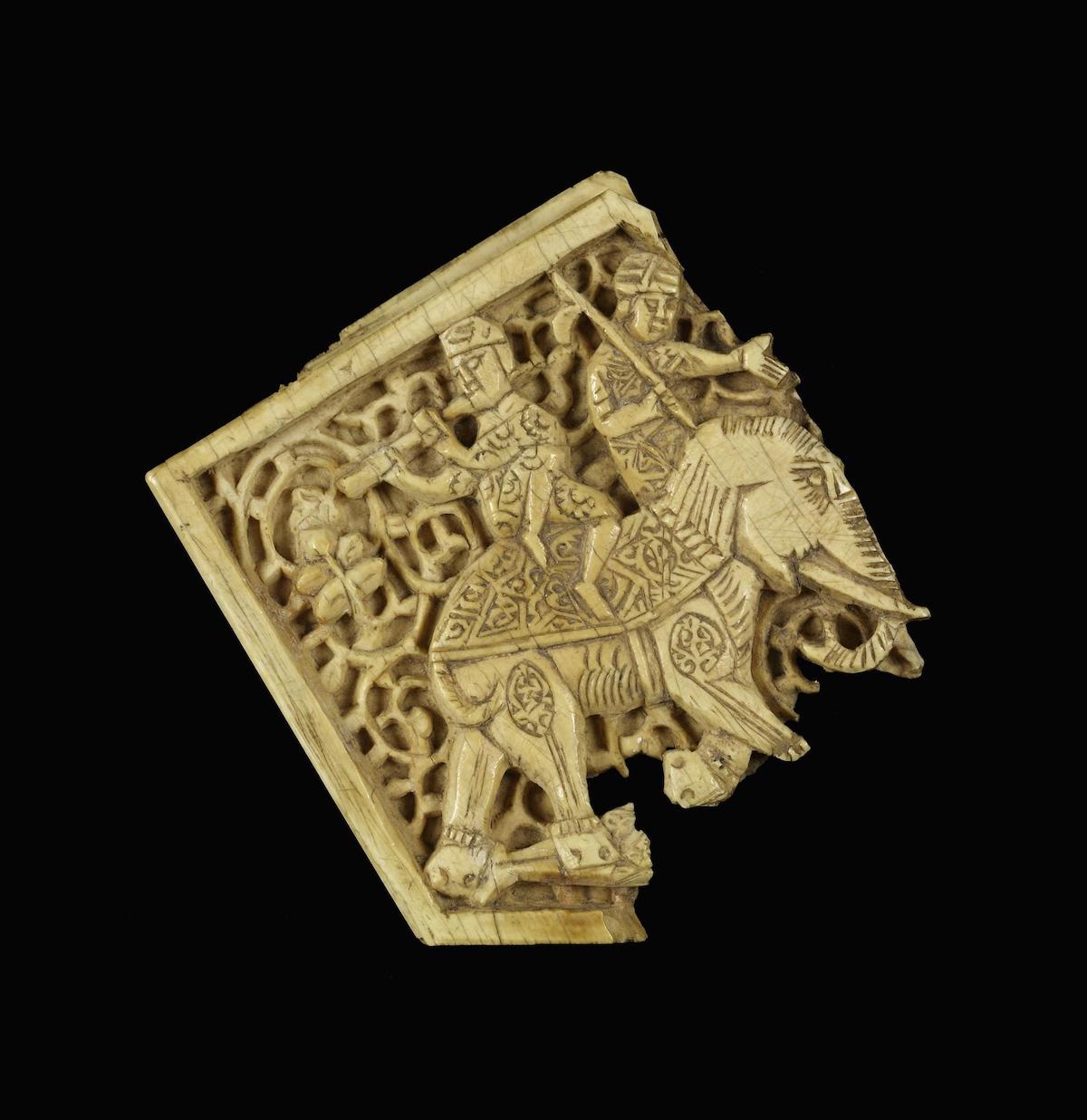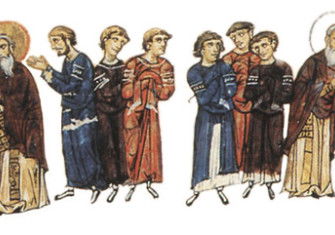‘The Emperor and the Elephant’ by Sam Ottewill-Soulsby review
The Emperor and the Elephant: Christians and Muslims in the Age of Charlemagne by Sam Ottewill-Soulsby surfaces Umayyad and Abbasid perspectives on their Frankish frenemies.

The elephant in the title of Sam Ottewill-Soulsby’s study of diplomatic relations between Christians and Muslims in the Carolingian period (800-887) is Abul-Abbas, who having arrived in Aachen in 802 as a gift to Charlemagne from the Abbasid caliph Harun al-Rashid thereafter became the most famous four-legged inhabitant of the Carolingian court. The gift was apparently a direct request from Charlemagne himself; the caliph went to a lot of trouble to comply. In Ottewill-Soulsby’s book, Harun does not appear as the sort of fabulously rich caliph we might encounter in the 1001 Nights, but as a hard-working ruler who went to great lengths to secure a precious elephant for Charlemagne from his reluctant Indian colleagues. This was not just any diplomatic gift, but one that was to influence the reputation of its grateful recipient forever: when Frederick Wilhelm IV of Prussia opened Charlemagne’s tomb in 1843, he found the emperor’s remains wrapped in a silk cloth. It was decorated with little elephants.
Prestigious gifts travelling between Aachen and Baghdad were an important factor in the diplomatic relationships between various Carolingian and Abbasid rulers. The reason why such relations existed in the first place has traditionally been explained by a supposed Carolingian-Abbasid alliance, formed in the middle of the eighth century against the Umayyads of al-Andalus and the Byzantines, who had created an alliance of their own. Francis W. Buckler, who published his Harunu’l Rashid and Charles the Great in 1931, interpreted diplomacy between Harun and Charles in the context of this ‘alliance thesis’, according to which both rulers sought collaboration when they each found themselves at loggerheads with Constantinople and Córdoba. But was it really that straightforward? Buckler relied on Frankish sources to build his theory, which means that he could do little more than replicate the Frankish narrative. The Abbasid or Umayyad perspective on the Carolingians has, therefore, hardly been taken into account.
This book makes a convincing case for a fundamentally different reading of Christian-Muslim relationships in the early Middle Ages. For one thing, there were more Muslim rulers than just the caliphs of Baghdad, and the Carolingians carefully constructed their relations with each of them – or decided it was not worth their while to conduct diplomacy at all. Ottewill-Soulsby provides a thorough tour of the Carolingians’ diplomatic landscape: the prestige diplomacy with the Abbasids; the frontier diplomacy with their unpredictable (and increasingly dangerous) Umayyad neighbours in al-Andalus; the very short-lived relations with the governor of Ifriqīya; and a conscious decision not to engage in diplomacy with the small emirates of Italy. What makes the book original is that Ottewill-Soulsby does not rely on Frankish sources alone, but also uses all available material produced by the Muslim societies in question – frustratingly scarce as it may be – to understand what circumstances or ideas guided diplomatic strategies. How and if envoys were sent or received, so it turns out, was dependent on both parties and on the specific political circumstances in which they found themselves at particular moments in time. A Muslim leader in al-Andalus, for instance, would happily collaborate with a strong Frankish neighbour if it suited his agenda, but could also decide to ignore or even fight the northerners if it suited his agenda better – and vice versa.
Ottewill-Soulsby makes sure that the reader understands how all these processes took place at the same time, and that they were part of a rich weave of other kinds of international relations. Envoys travelled with merchants along established trade routes, and frontier regions on both sides of the border had their own micro-political dynamics (which were not necessarily in accordance with those of their rulers); internal political crises were likely to monopolise the attention of those in power at the expense of official diplomacy. The red thread of diplomacy, in other words, runs through contemporary political, economic, religious and other processes and its failure or success should be understood as the result of a complex calibration of interests.
My favourite section of the book discusses a series of events which highlight the author’s approach particularly well. It revolves around the Martyrs of Córdoba, a group of fanatical Christians, Franks among them, who in the mid-ninth century deliberately provoked the authorities in al-Andalus by committing blasphemy. That they were murdered as a consequence was their plan, fuelled by the fervent wish to be martyred by Muslim hands. Nearly 50 of them were successful, which generated relics considered important enough for immediate Frankish acquisition. Events such as these, unexpected as they were, provided opportunities which demanded immediate reactions. Charles the Bald did not miss a beat: he sent two Parisian monks to Spain to gather relics of these ‘fresh’ martyrs (they managed to get relics of three of them), in the process of which the ties with Spanish Christians were tightened and up-to-date information about the Church in Spain gathered. By this point the Church in the north and the Church in the south were more or less separate institutions.
Why Christians and Muslims conducted diplomatic relations in the early Middle Ages is, all in all, a story of opportunities, ambitions and the continuously changing priorities of the parties involved. Both Christian and Muslim rulers put considerable energy into fostering ties when they had something to gain. Sometimes these took the shape of camels or elephants making their way to Aachen; sometimes the contact was the less tangible exchange of news and gossip. The panorama unfolded is fascinating, all the more so since the author has a great eye for detail. One only wishes for the publication of more translations of Arabic sources.
-
The Emperor and the Elephant: Christians and Muslims in the Age of Charlemagne
Sam Ottewill-Soulsby
Princeton University Press, 392pp, £35
Buy from bookshop.org (affiliate link)
Carine van Rhijn is a lecturer in medieval history at Utrecht University.






